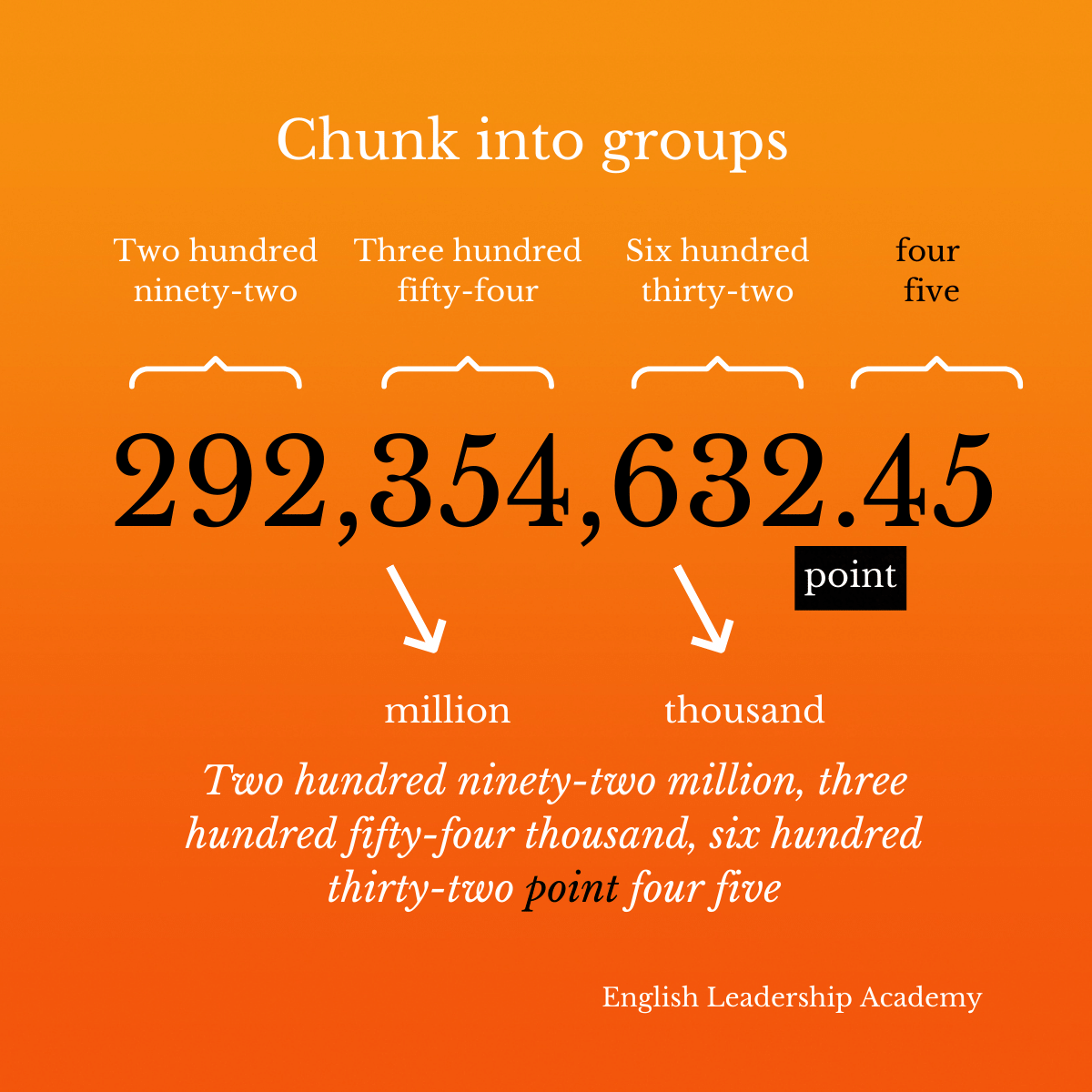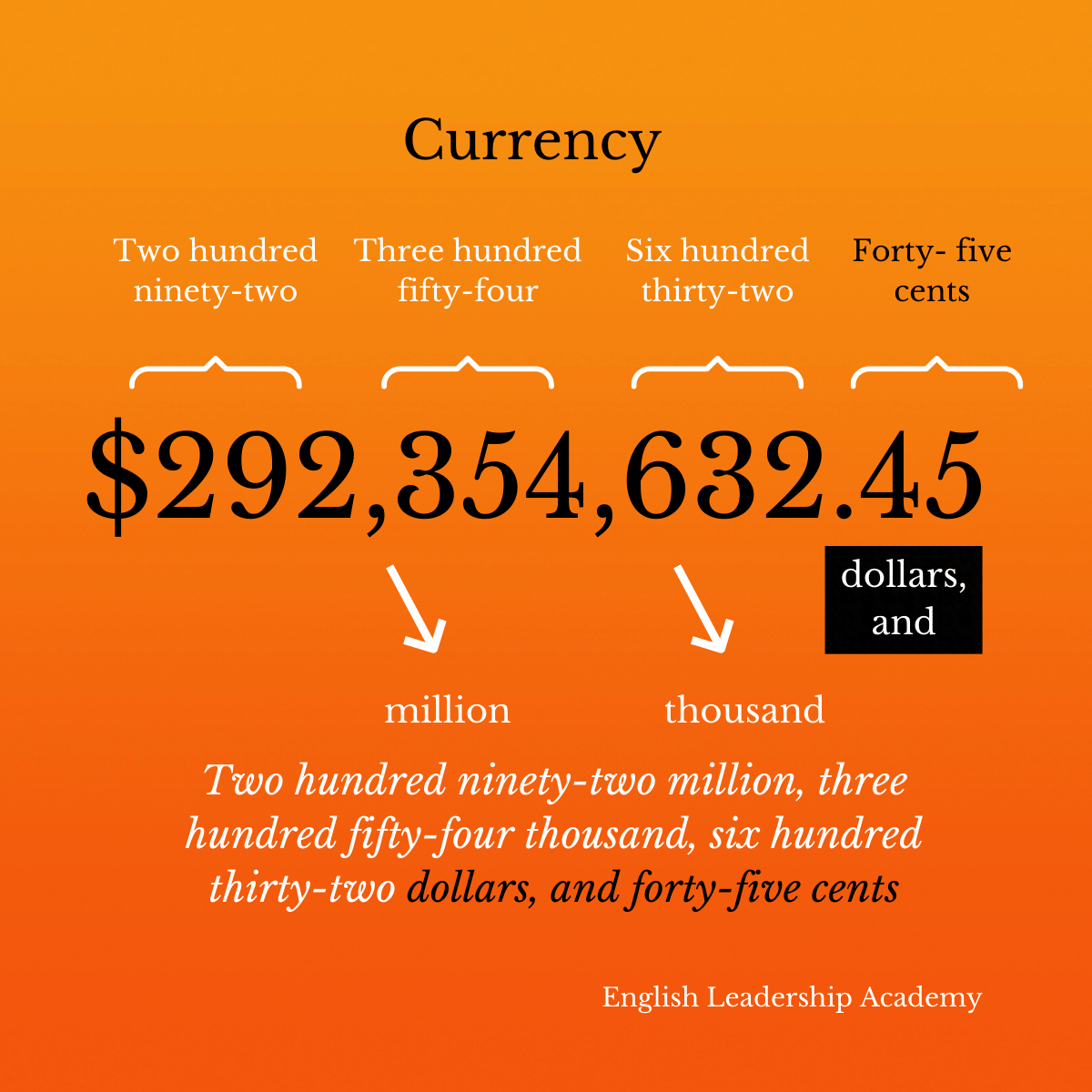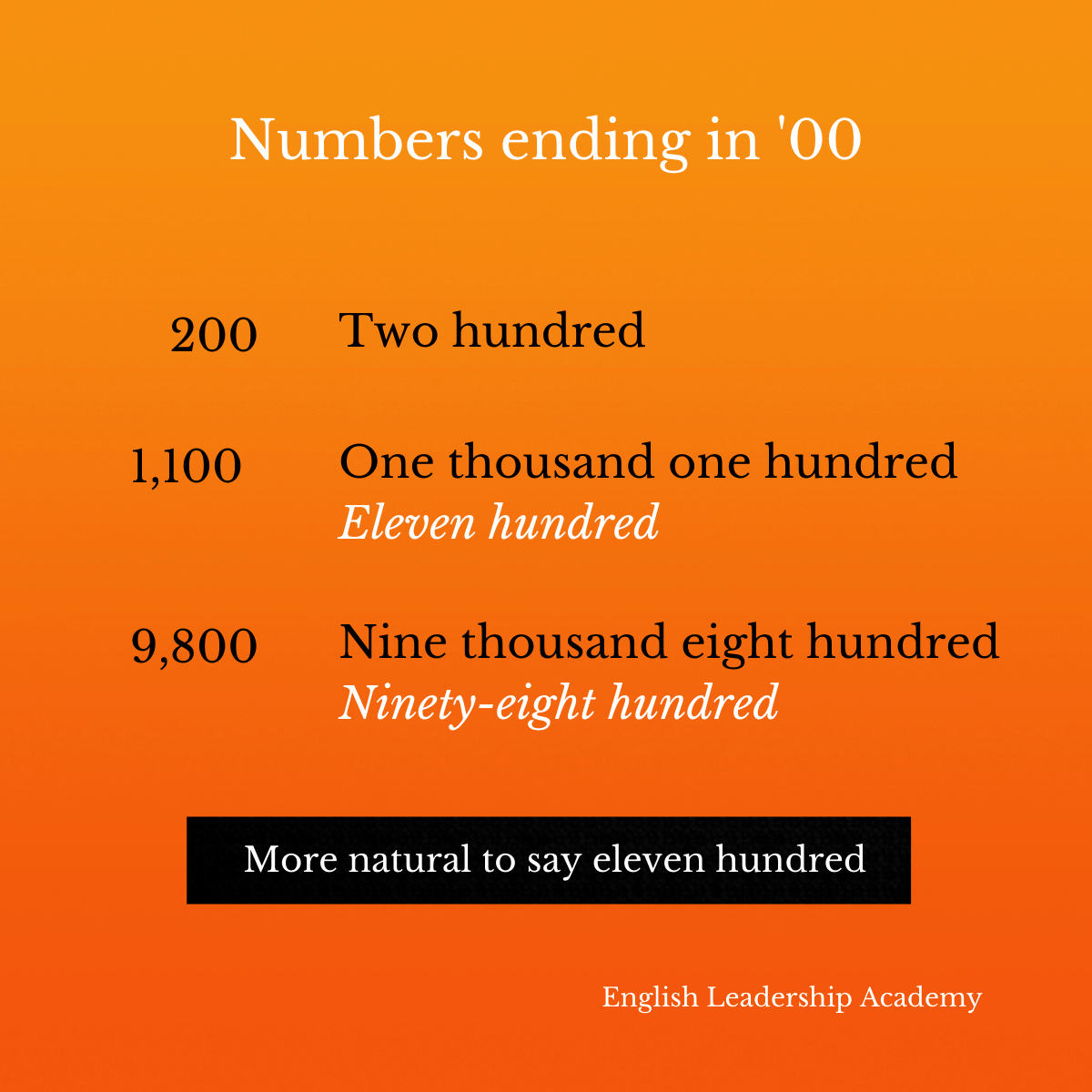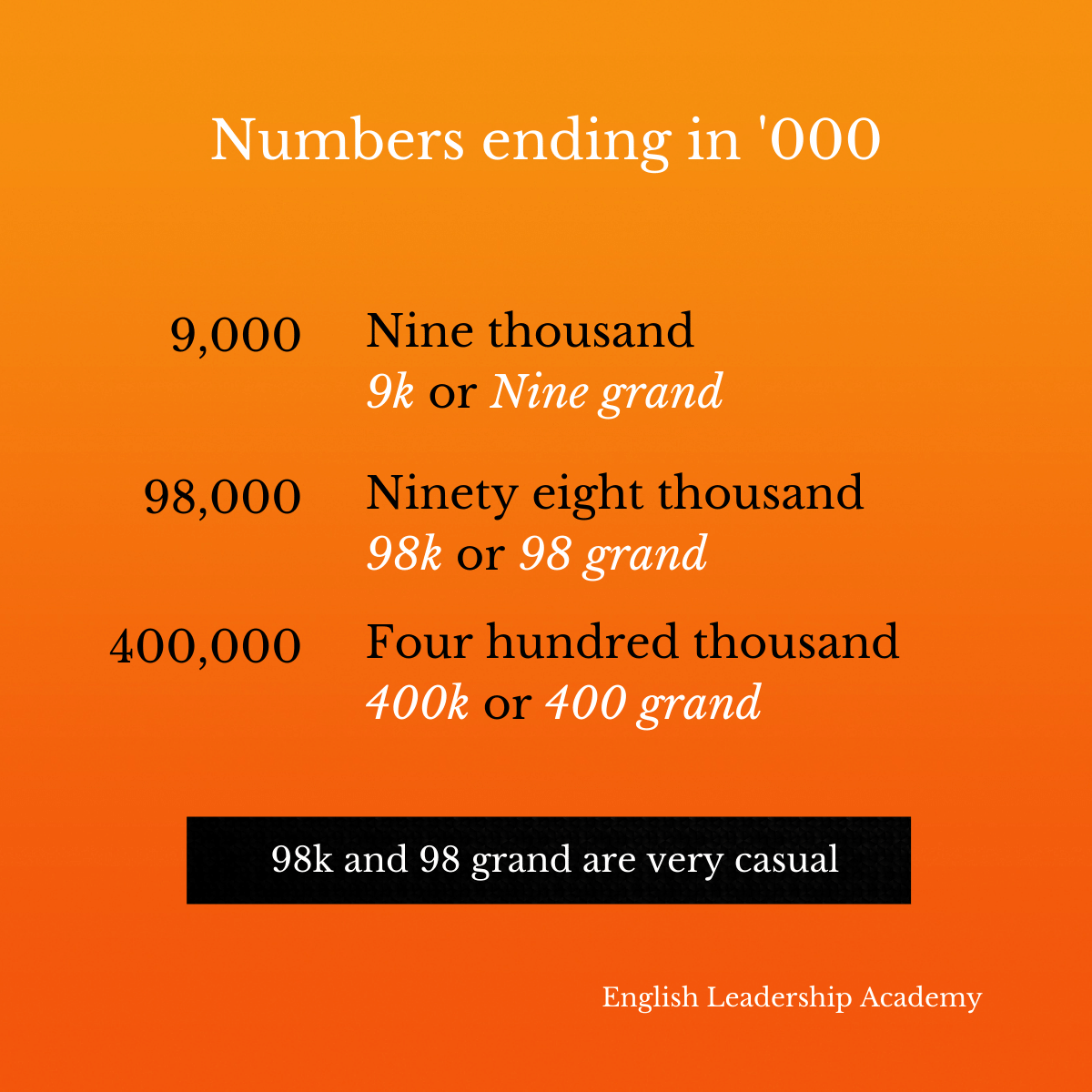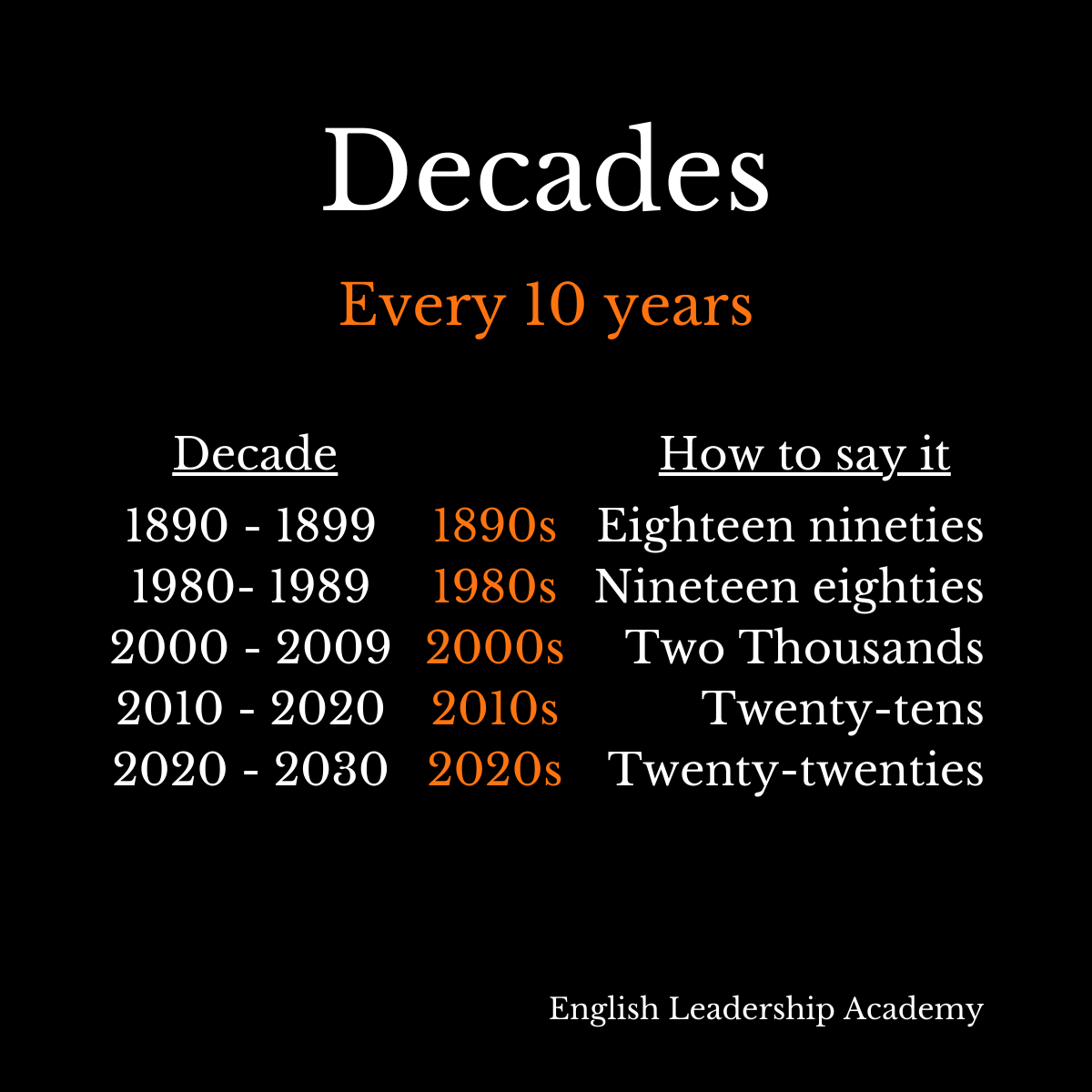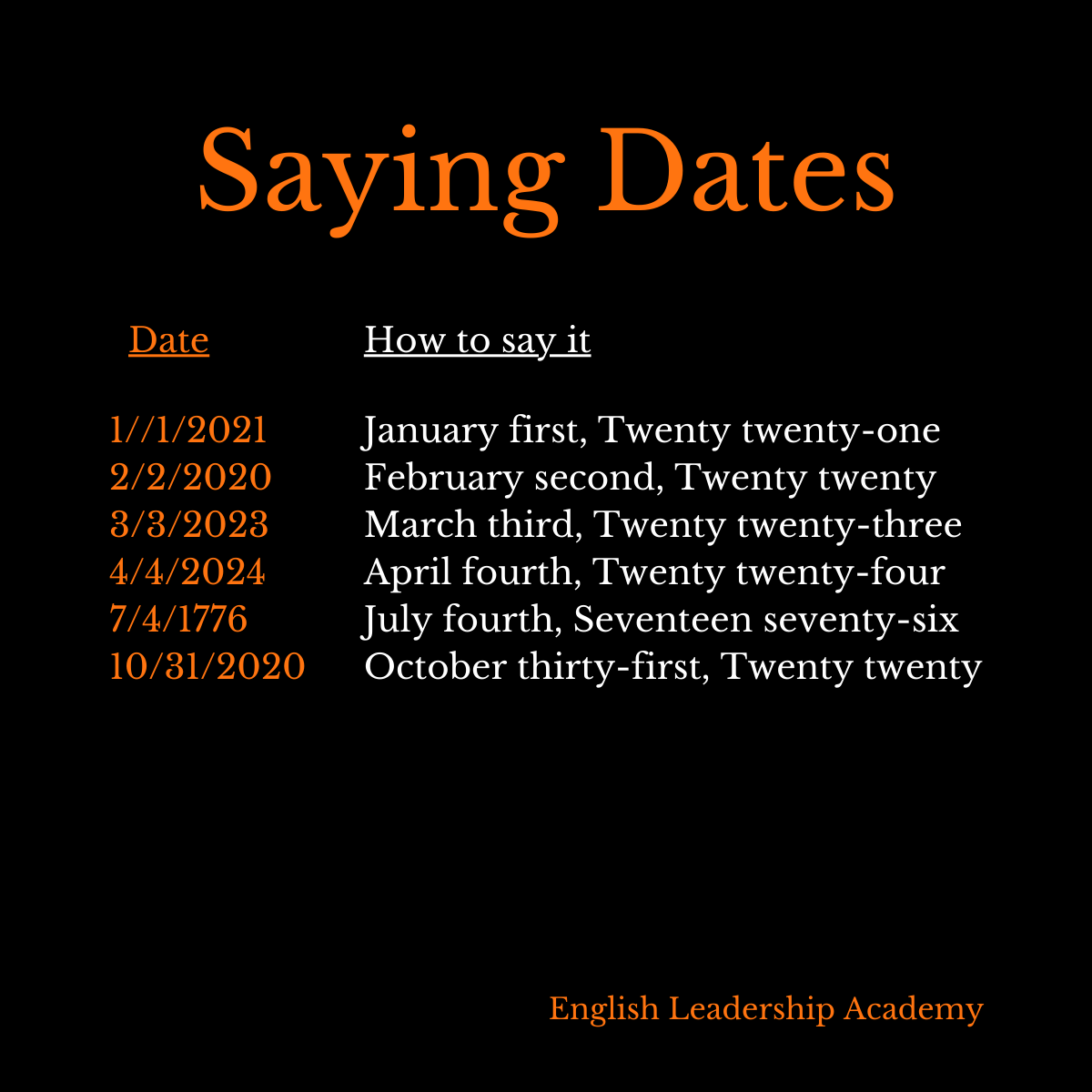How often do you find yourself confused about trying to say numbers and dates in English?
In your native language? This is no problem at all - it is very normal and natural.
In English? You sound like you don't know anything about finance and your colleagues and clients do not have confidence in you because you are not able to clearly communicate numbers.
♦️ When your listener doesn't have confidence in you, they don't trust you!
Let's look at how you can naturally communicate different kinds of numbers and dates in American English. I'll focus on American English, because...well, that's what I know. I will also try to show some differences between how numbers and dates are presented in different countries.
This article will cover the following:
- Big Numbers
- Currency/Prices
- Small Numbers
- Decimals
- Years
- Centuries
- Decades
- Dates
Big Numbers
As we begin this journey of understanding numbers, you'll be given a series of examples. Let's begin by assuming that the numbers are actual numbers and not currency ($, Euro, etc.).

If we expand the number to 354,632, the most helpful technique is to chunk the numbers into small groups of three digits and separate them with a comma.

There is no reason to include an "and" between the chunks of numbers and also no reason to include an "and" anywhere when saying or writing this number. This is custom for how numbers are stated in the US. Other countries will differ. You will find many countries use "and" often.
If we expand the number to 292,354,632, we now create three chunks, separated by commas and again we don't need to use the word "and" when we say this number.

And if we continue to expand the number to include a decimal point, another change will take place.
It is important to remember that we are still discussing numbers in our example, and not currency.
A couple of important changes take place. First, you'll include the decimal point which signifies that you will have a number less than one. When you say this number in the US, you'll usually use the word "point" to describe the decimal point.
In other parts of the world, you'll use the word "dot" to describe the decimal point.

Currency/Prices
Let's look at how some things change when we begin using currency, such as US dollars.
The big change is to say the currency (dollars/euros/rupees) after the last whole number, which in this case is after the 632. You will then include the words "dollars, and" and then finish by changing the "four five" to "forty-five cents."

Decimal Separator Countries
More than half of the countries in the world use a different format than what has been shown above. In general, the commas become decimal points and the decimal point becomes a comma.
You will find this in most (but not all) of the countries in Europe as well as in many different countries around the world. Here is more detailed information on countries that follow the decimal separator system, which is aligned with the metric system.
Below is an example of the difference of these two methods, and note that you will say it the same way as described before.
Some tips to think about:
1. Don't make words plural. Million is million, not millions. Thousand is thousand, not thousands.
Exception: The words Dollars/Euros/Rupees are plural.
2. 100 - 1,000 - 1,000,000. You can say one hundred or a hundred in almost all situations. One thousand or a thousand. One million or a million. This only applies when the numbers are 100, 1,000, and 1,000,000.
3. With currency, you will say the big numbers first followed by the currency denomination, such as dollars or euros. As an example, $34,089 is said as thirty four thousand, eight-nine dollars.
Smaller numbers
Ending in '00
Let's look at numbers that are 9,900 or less, and end in "00." Examples would be 200, 1,100, and 9,800.



Again this applies to numbers that are 9,900 or less, and end in 00.
The following applies to numbers and prices.



Ending in '000
If a number ends in '000 such as 9,000 or 98,000 or 400,000, here are some examples:

As an interesting side note, you can also say "nine grand" or "9k." You will never write nine grand, but you will hear native speakers say it naturally. These are both very normal and very casual ways a native US speaker would say this.


Dates
Let's break down dates into a few categories. We'll start big and then dive deeper into more detail.
Years
One of the best tips you can use to make years sound very natural is to break the dates into two chunks as illustrated below:
Years 2001 - 2009
In all past years of history, the first ten years of a century were always said the same way.


But, for some reason in the years 2001 - 2009 everything changed. No idea why.


Some things just can't be explained. Please see examples of this below.
Centuries
Every 100 years is a century. There are times when you need to discuss something that happened many years ago. Here is a simple illustration of how you can naturally say different centuries in English.
Decades
Often dates are described by the decade they happened in. A decade is a ten year period. It is interesting that even for native speakers, it is uncomfortable to say the 2000s (said as the two thousands), the 2010s (said as the twenty tens) and twenty twenties (2020s), so you are not alone - everyone is a little uneasy saying these.
Let's look at some examples and how you can say them as a native US speaker would say them.
Specific Dates
As a non-native speaker, it is difficult to communicate dates accurately when you are speaking. Let's look first at how you say numbers that are used for dates.
Specifically we'll look at 1st, 2nd, 3rd, 4th, etc. In general you will put a "th" on the end of the number between 4 - 20, and 24-30. Exceptions are 1st, 2nd, 3rd, 21st, 22nd, 23rd, and 31st.
Here's an example of how you say these numbers.
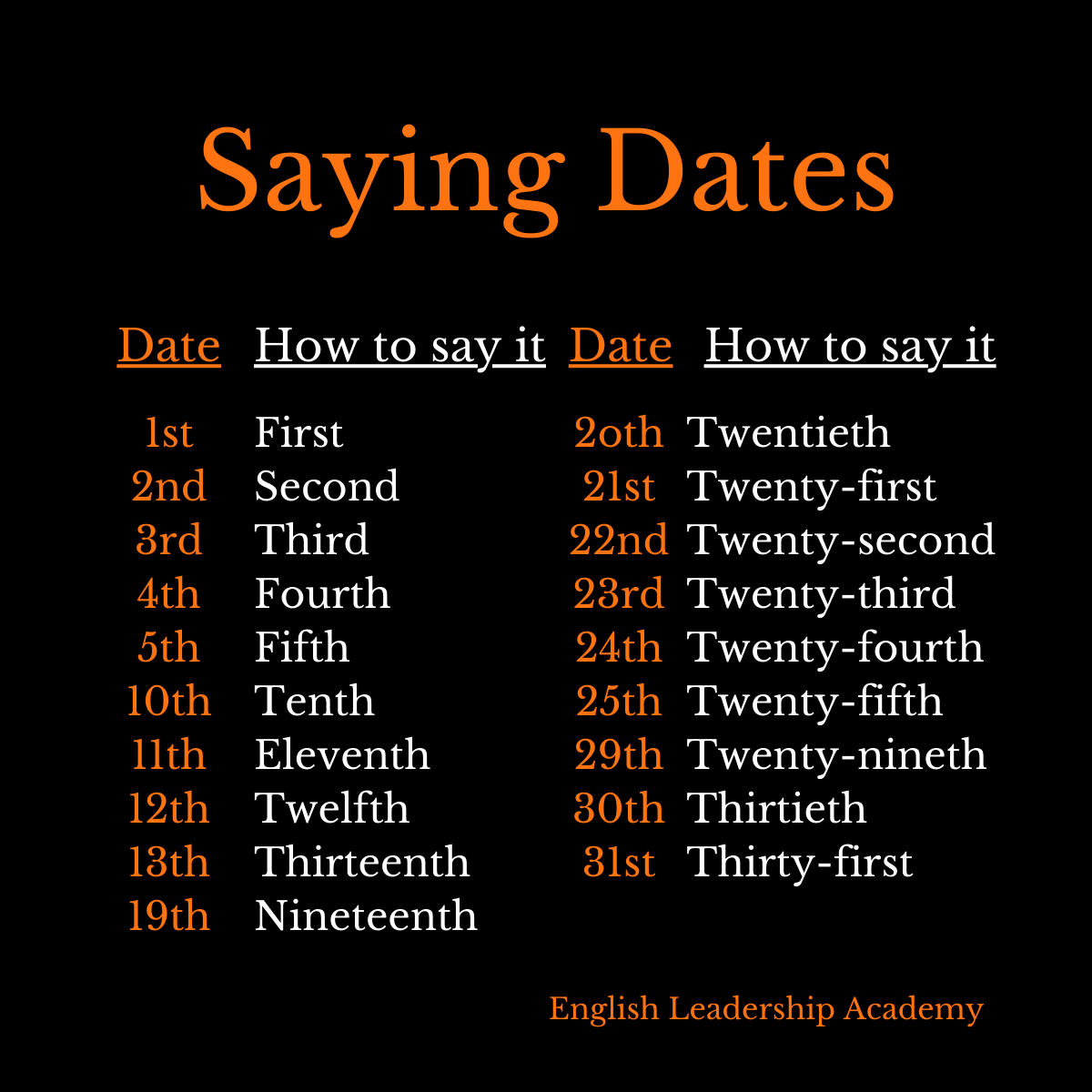
Let's put it all together now with the month, day and year. Of course, this creates more confusion as the US is one of the only countries that uses the month - day - year format.

You can use the table above as a guide for how to say days as part of these full dates.

Additionally, there are some countries that use the format of year-month-day.
The calendar can vary from country to country and dates will always be confusing. The recommendation is to use the format that corresponds to the country that you are using the information for.
The illustration below demonstrates how you would say dates in the US. Please note that you say the date differently than you say the year (use chunking for the year), as explained earlier in this article.
Also keep in mind, this chart shows how you say the dates when you are speaking. This differs from how you write the date.
The key with communicating naturally in business English is to practice saying these numbers and dates out loud. Try to make each of these become a natural part of your vocabulary and you will increase your communication confidence.
If you would like to learn how to become a better business English Speaker, please check out this article.
Mastering the ability to say numbers and dates will increase your confidence in your business English.





